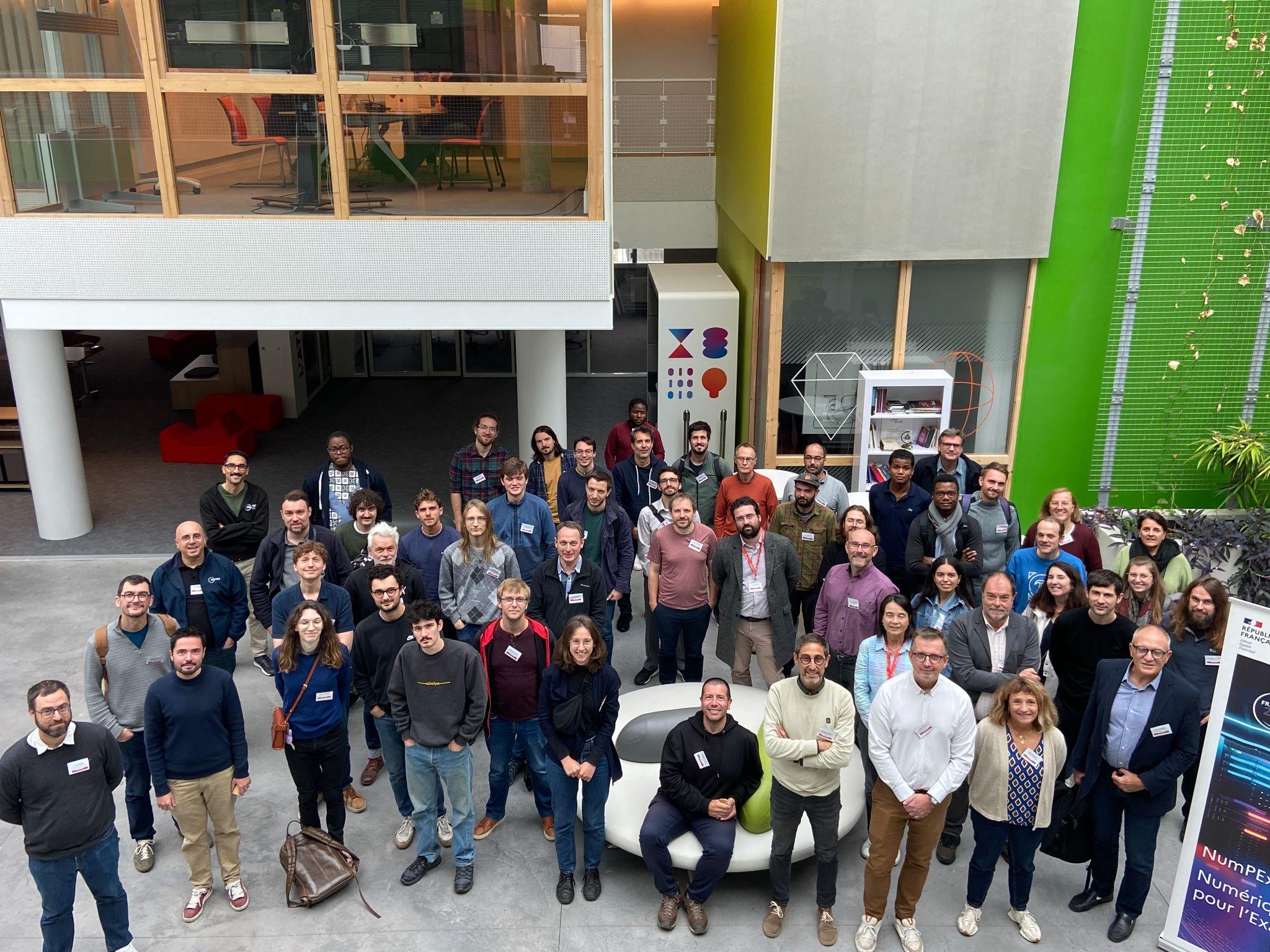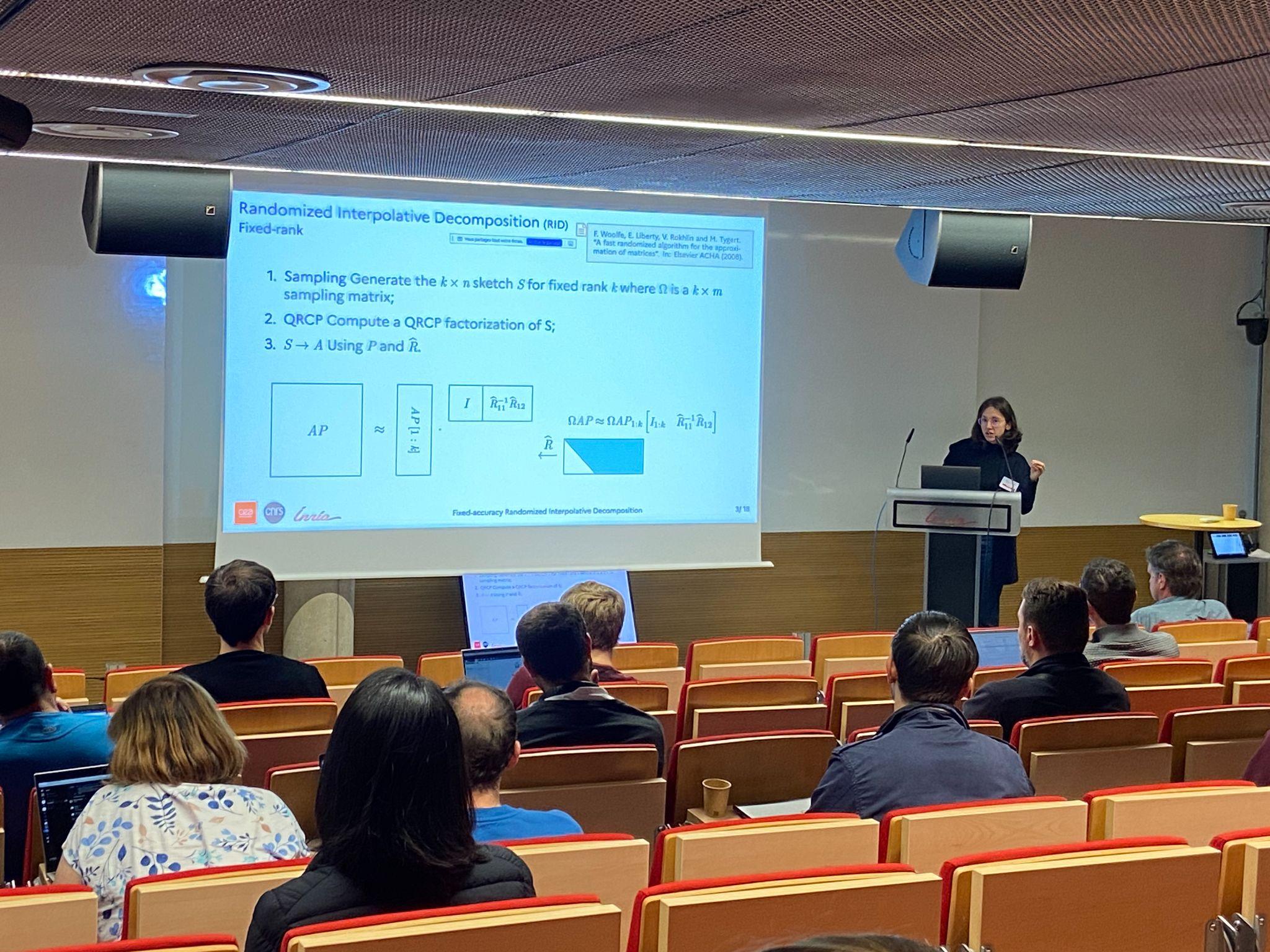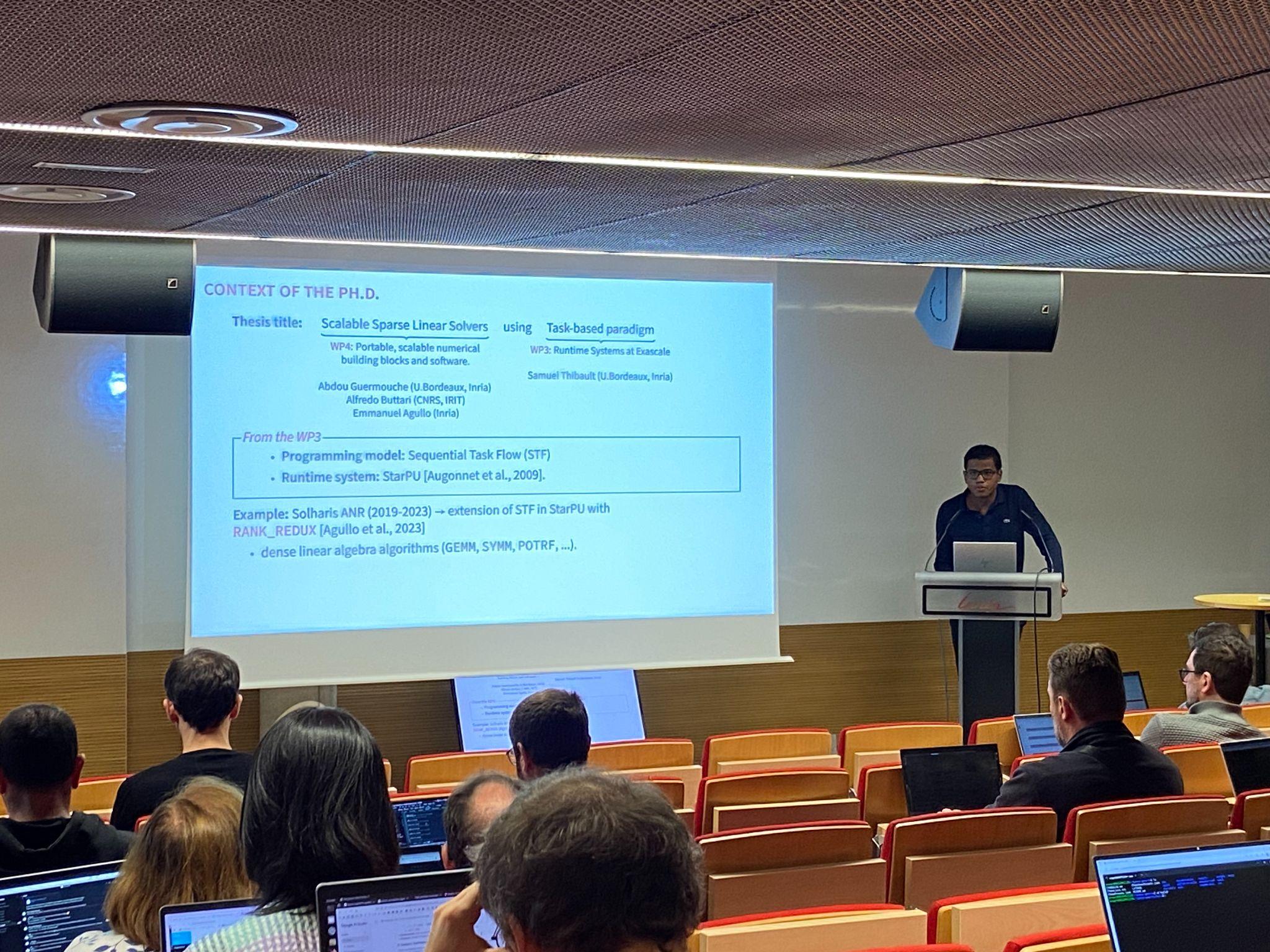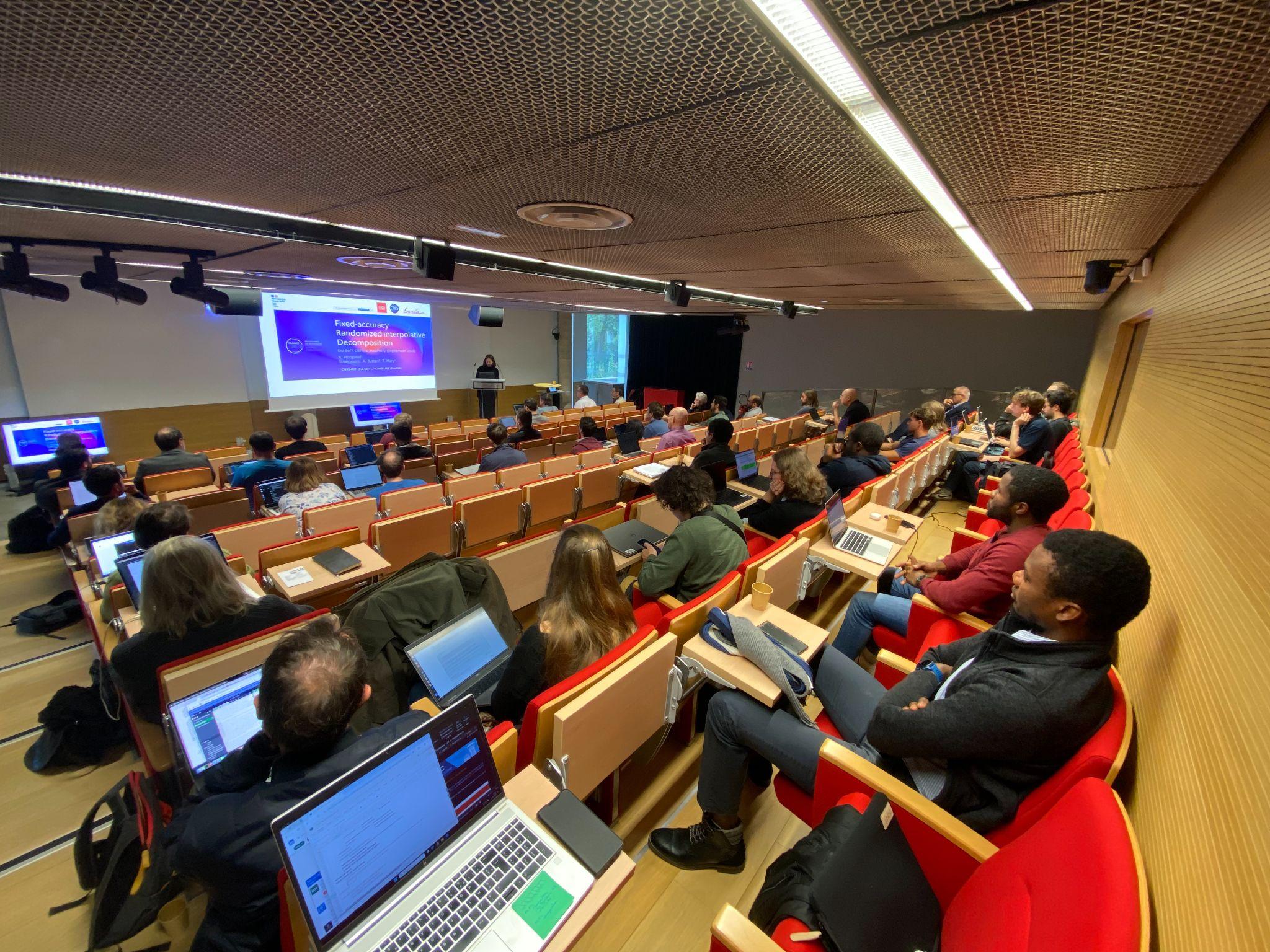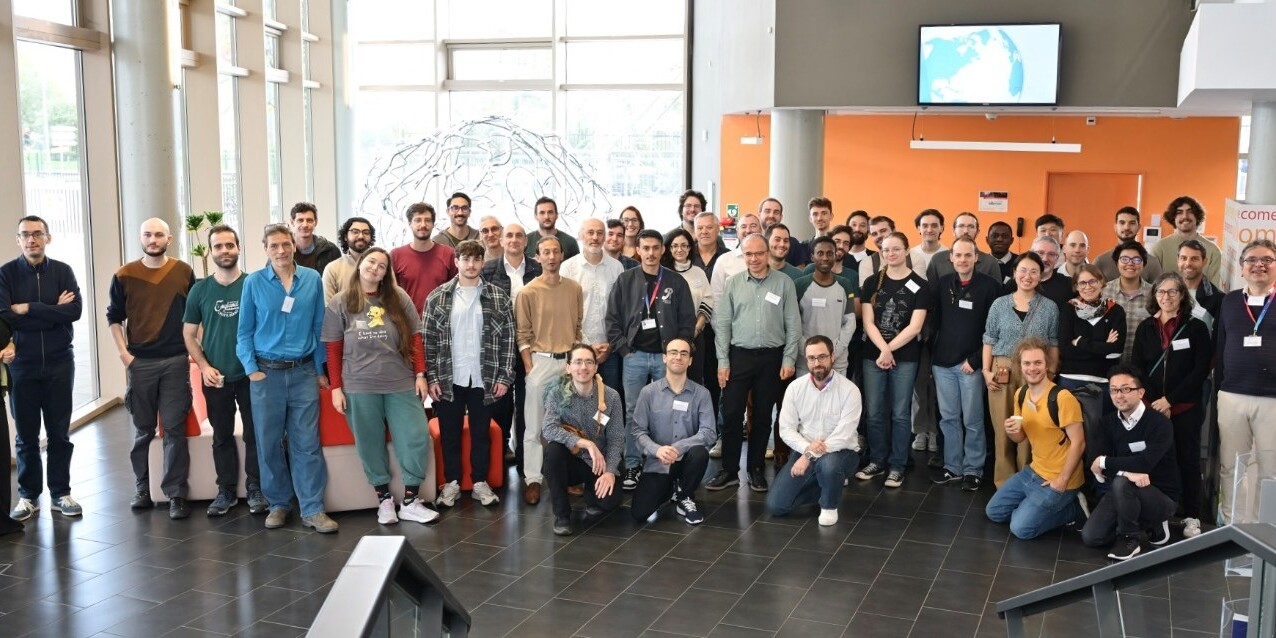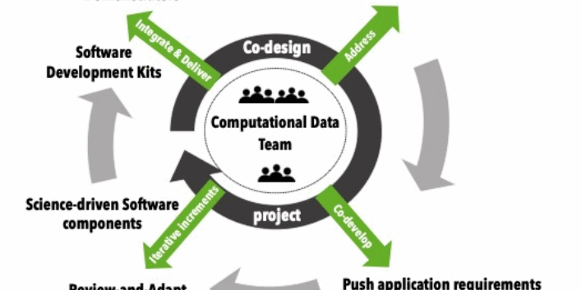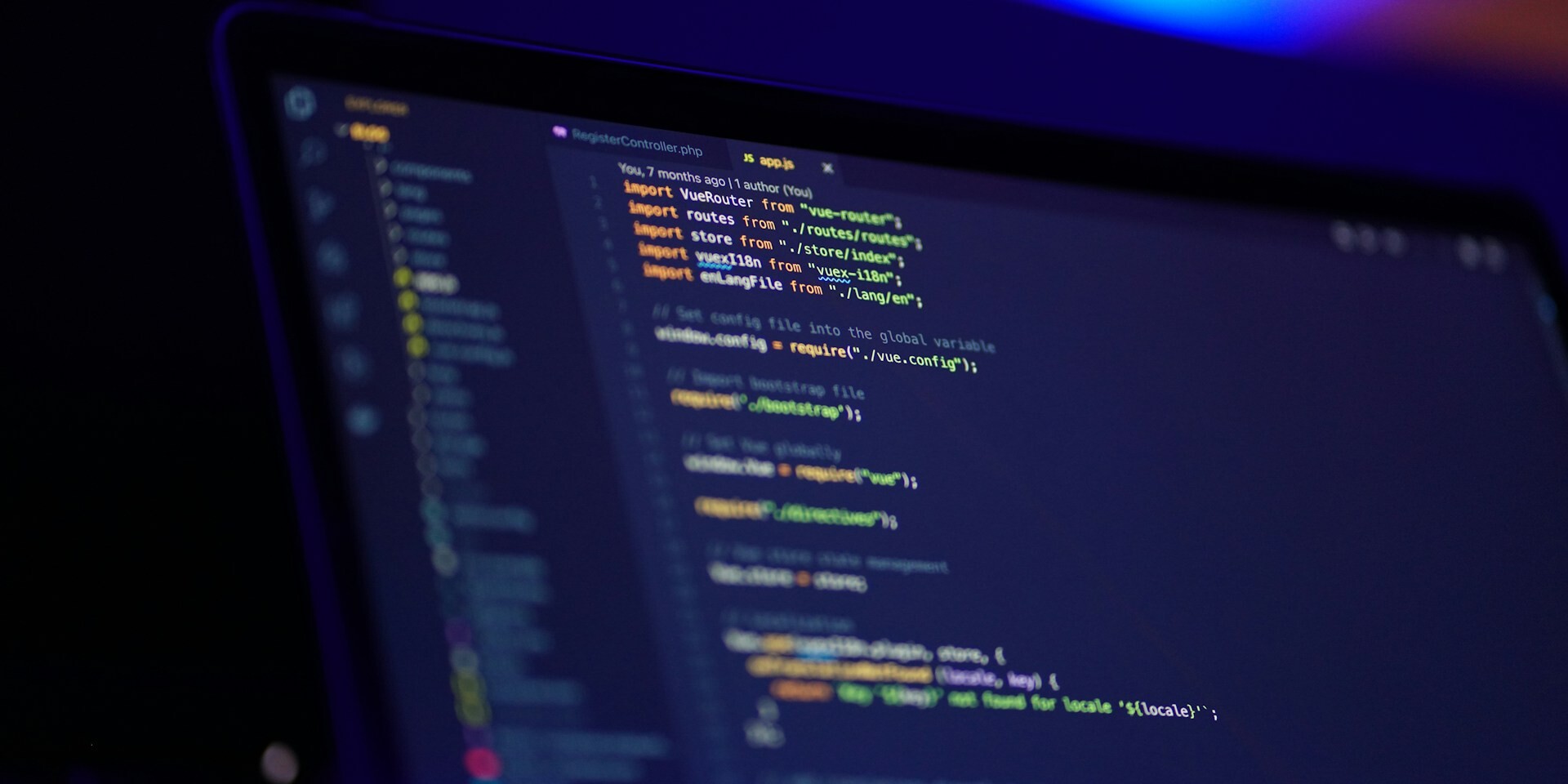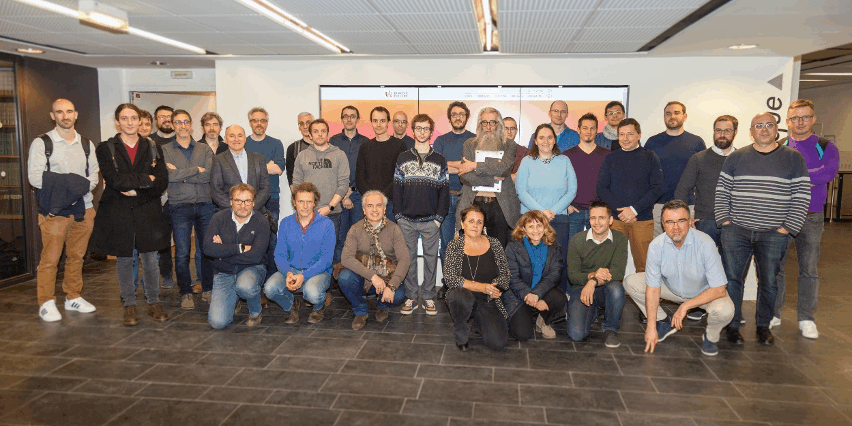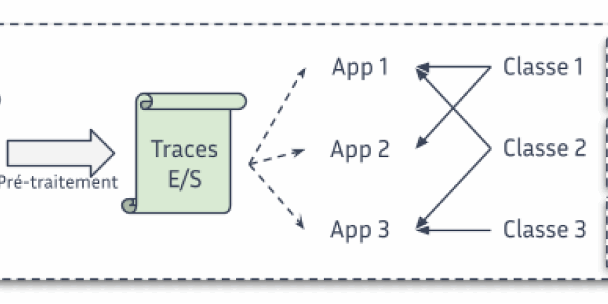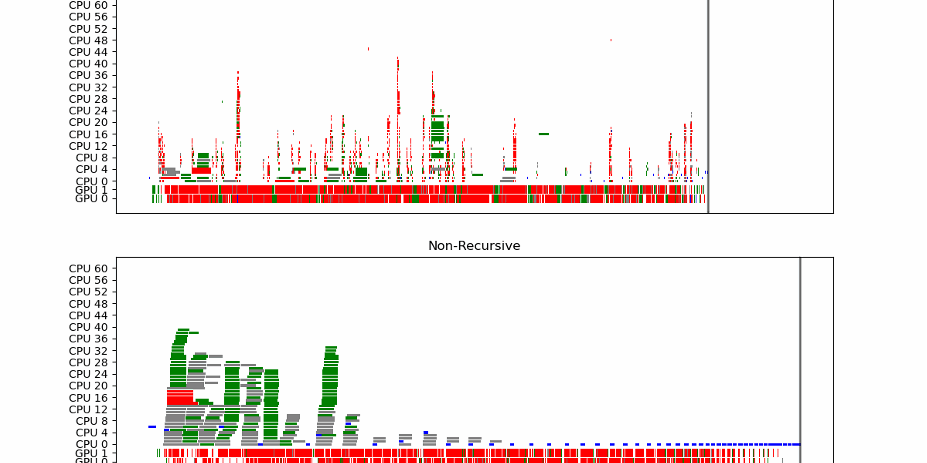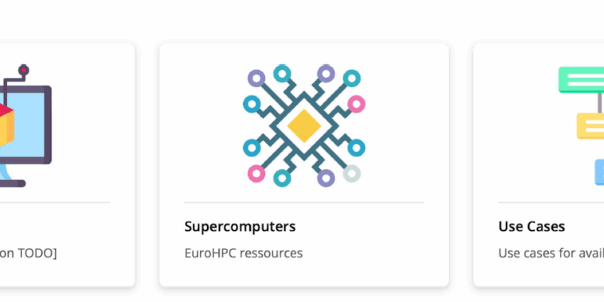The 2025 Exa-SofT Annual Assembly took place from 19 to 21 October, 2025, bringing together more than 60 researchers and engineers from academia and industry to discuss progress on scientific computing software, share results from work packages, and welcome the latest recruits.
Jeudi 19 octobre 2025
- General presentation of the project within its broader context (NumPEx)
by Raymond Namyst, professor at University of Bordeaux
and Alfredo Buttari, CNRS research scientist - Overview of each Work Package (WP)
by WP leaders
WP1 – Efficient and composable programming
models
By Marc Perache, CEA
Christian Perez, Inria
WP2 – Compilation and Automatic Code
Optimization
By Philippe Clauss, Inria
WP3 – Runtime Systems at Exascale
By Samuel Thibault, University of Bordeaux
WP4 – Numerical Libraries
By Marc Baboulin, Université Paris-Saclay
Abdou Guermouche, University of Bordeaux
WP5 – Performance analysis and
prediction
By François Trahay, Télécom SudParis
WP6 – Digital for Exascale
Energy management
By Georges Da Costa, Université de Toulouse
Amina Guermouche, Inria - Focus on 3 scientific results by recruits
by Ugo Battiston (WP1 & WP2)
Alec Sadler (WP2)
Erwan Auer (WP2)
Vendredi 20 octobre 2025
-
Focus on 3 scientific results by recruits
by Raphaël Colin (WP2)
Thomas Morin (WP3)
Karmijn Hoogveld (WP4) -
Talk by David Goudin, Eviden
-
Introduction to our latest recruits
by Nicolas Ducarton (WP3)
Brieuc Nicolas (WP4)
Matthieu Robeyns (WP4)
Samuel Mendoza (WP4)
Jules Evans (WP6)
Assia Mighis (WP6)
3 minutes each to introduce themselves and their research -
3 presentations of mini-apps by Exa-DI
Proxy-Geos
by Henri Calandra, Total Energies
Dyablo
by Arnaud Durocher, CEA
Unstructured mesh generation for Exascale systems: a proxy application approach
by Julien Vanharen, Inria
20 minutes per mini-app: presentation + discussion on objectives, coding, status, needs, bottlenecks, and support from PC2 -
Breakout sessions for regular members / private exchanges for Board members
by Henri Calandra, Arnaud Durocher, Julien Vanharen
Technical discussions between Exa-Soft members and mini-app developers -
Board meeting feedback to Exa-Soft leaders
Session restricted to Board members, Exa-Soft leaders, and ANR
Saturday, 21 October 2025
-
Retour d’information sur les sessions en petits groupes
-
Focus sur 3 résultats scientifiques par les recrues
par Catherine Guelque (WP5)
Jules Risse (WP5 & WP6)
Albert d’Aviau (WP6) -
Mot de la fin : prochaines étapes, livrables
par Raymond Namyst, professeur à l’Université de Bordeaux
et Alfredo Buttari, chercheur au CNRS
Participantes et participants
- Emmanuel Agullo, Inria
- Erwan Auer, Inria
- Ugo Battiston, Inria
- Marc Baboulin, Université Paris-Saclay
- Vicenç Beltran Querol, BSC
- Jean-Yves Berthou, Inria
- Julien Bigot, CEA
- Jérôme Bobin, CEA
- Valérie Brenner, CEA
- Elisabeth Brunet, Telecom SudParis
- Alfredo Buttari, CNRS
- Henri Calandra, Total Energies
- Jérôme Charousset, CEA
- Philippe Clauss, Inria
- Raphaël Colin, Inria
- Albert d’Aviau de Piolant, Inria
- Georges Da Costa, Université de Toulouse
- Marco Danelutto, Université de Pise
- Stéphane de Chaisemartin, IFPEN
- Alexandre Denis, Inria
- Nicolas Ducarton, Inria
- Arnaud Durocher, CEA
- Assia Mighis, CNRS
- Bernd Mohr, Jülich
- Thomas Morin, Inria
- Jules Evans, CNRS
- Clémence Fontaine, ANR
- Nathalie Furmento, CNRS
- David Goudin, Eviden
- Catherine Guelque, Telecom SudParis
- Abdou Guermouche, Université de Bordeaux
- Amina Guermouche, Inria
- Julien Herrmann, CNRS
- Valentin Honoré, ENSIIE
- Karmijn Hoogveld, CNRS
- Félix Kpadonou, CEA
- Jerry Lacmou Zeutouo, Université de Picardie
- Sherry Li, Lawrence Berkeley National Laboratory
- Pérache Marc, CEA
- Théo Mary, CNRS
- Samuel Mendoza, Inria
- Julienne Moukalou, Inria
- Raymond Namyst, Université de Bordeaux
- Brieuc Nicolas, Inria
- Alix Peigue, INSA
- Christian Perez, Inria
- Lucas Pernollet, CEA
- Jean-Marc Pierson, IRIT
- Pierre-Etienne Polet, Inria
- Marie Reinbigler, Inria
- Vincent Reverdy, CNRS
- Jules Risse, Inria
- Matthieu Robeyns, IRIT
- Alexandre Roget, CEA
- Philippe Swartvaghe R, Inria
- Boris Teabe, ENSEEIHT
- Samuel Thibault, Université de Bordeaux
- François Trahay, Telecom SudParis
- Julien Vanharen, Inria
- Jean-Pierre Vilotte, CNRS
- Pierre Wacrenier, Inria
© PEPR NumPEx

